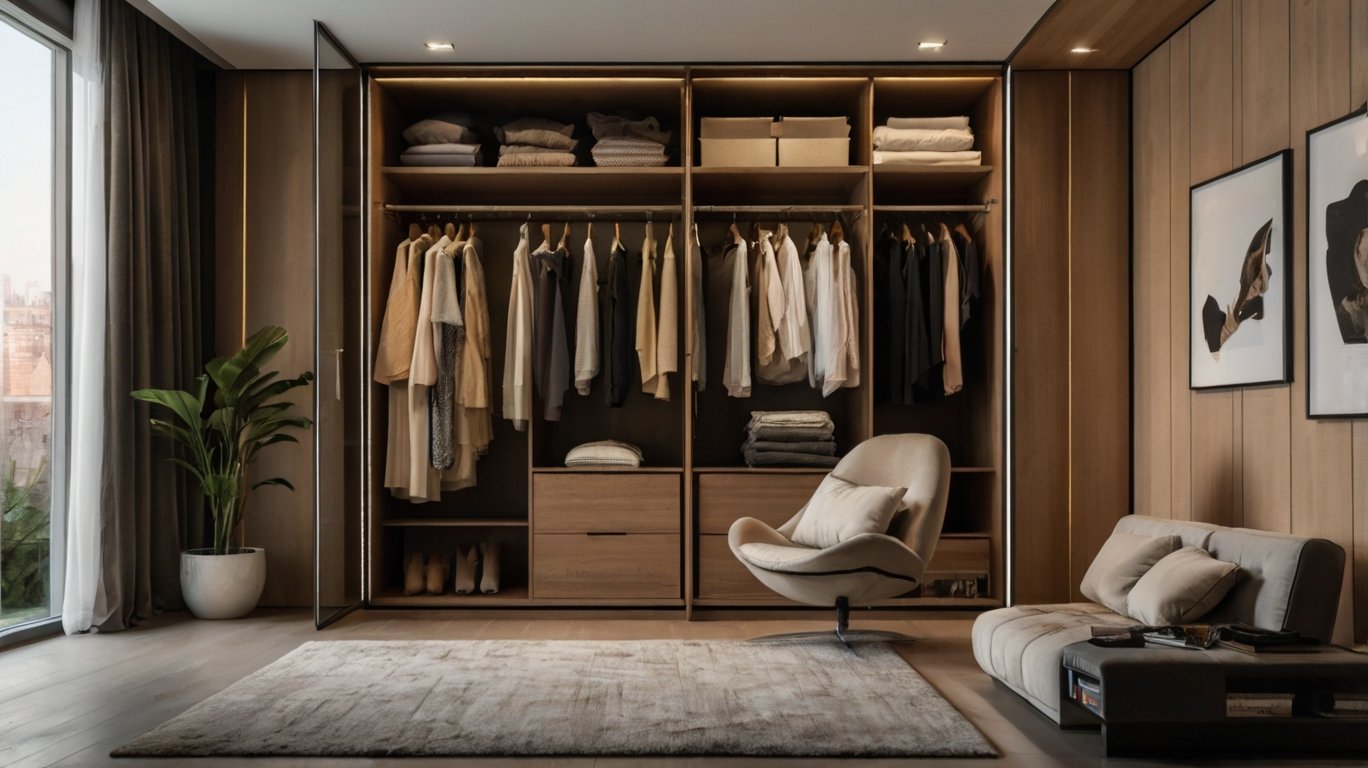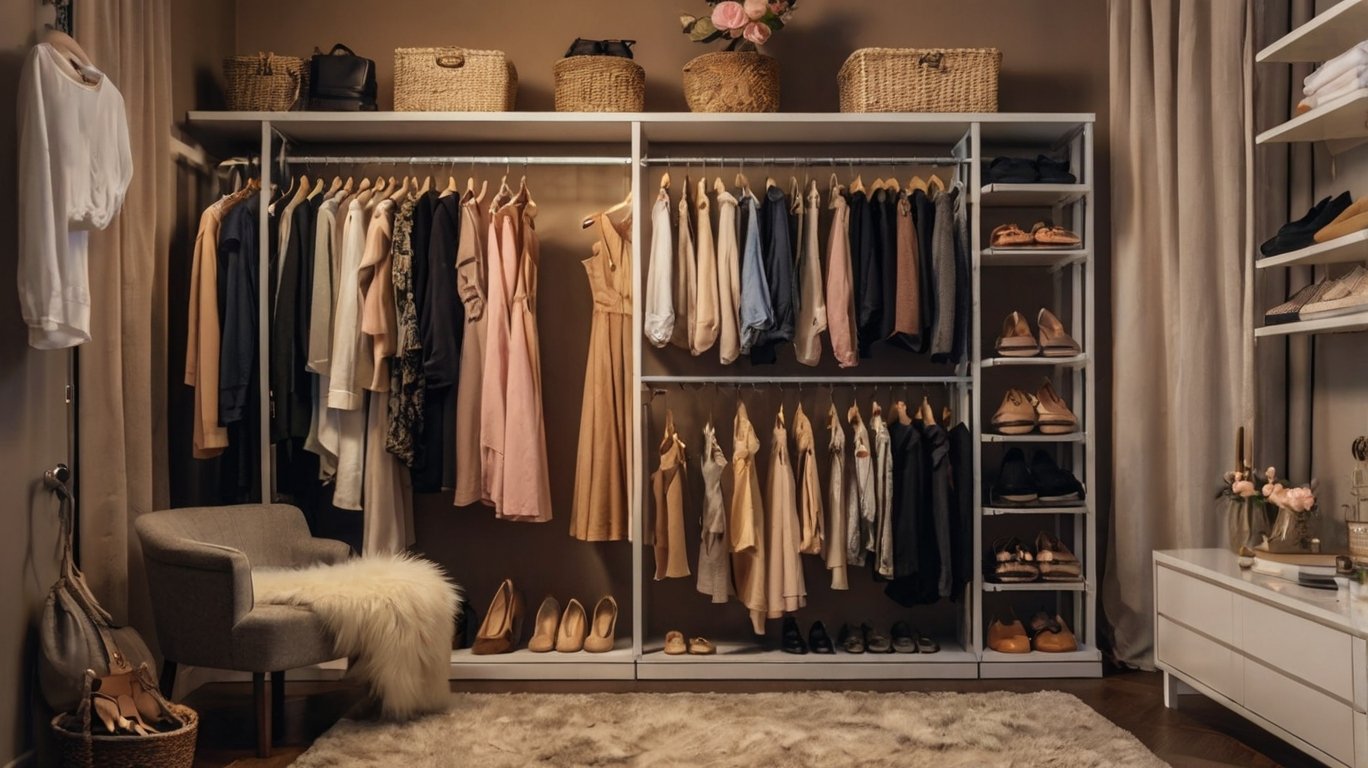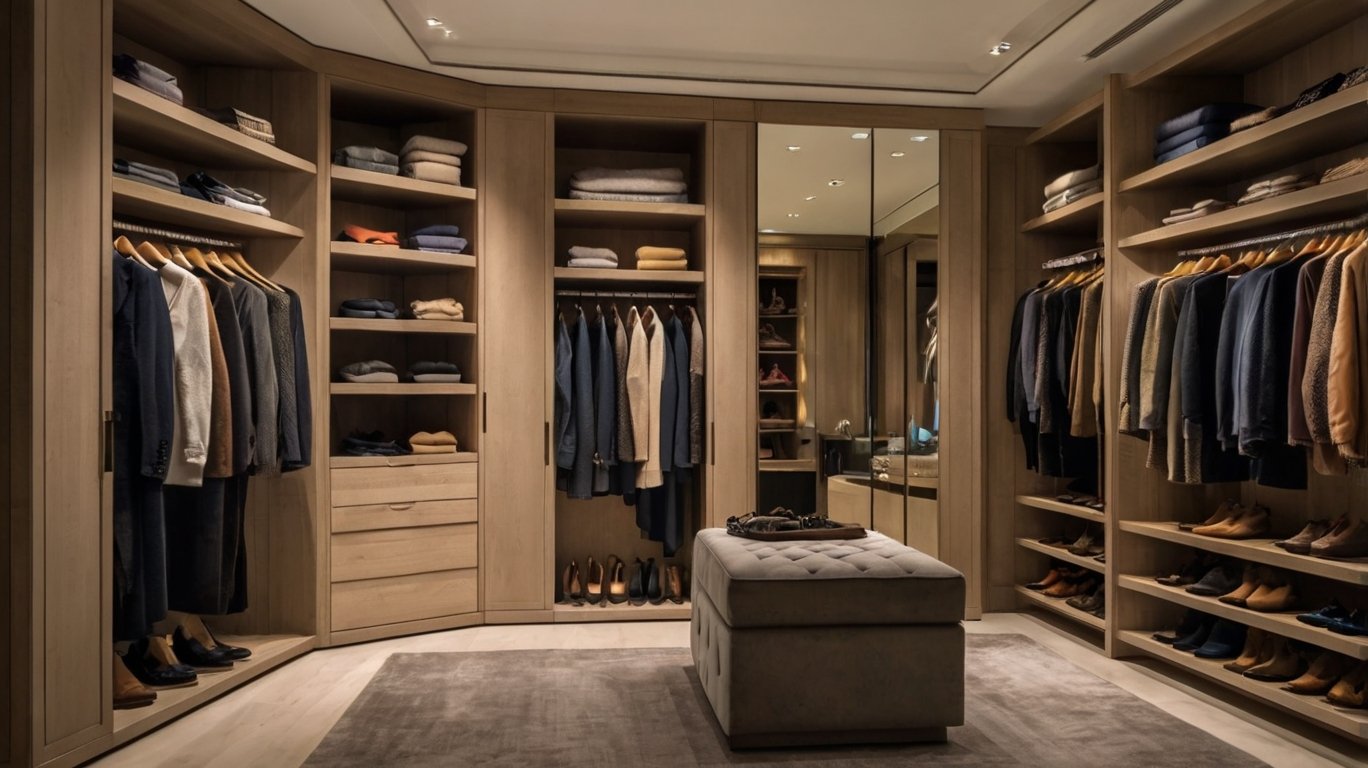Organizing your closet doesn’t have to be overwhelming when you use the right strategies. With proper planning and smart storage solutions, you can transform your chaotic wardrobe into a functional, efficient space that maximizes every inch available.
Your closet is one of the most frequently used spaces in your home, yet it’s often the most disorganized. We all have clothing items we never wear but keep due to emotional attachment, or we simply let clutter take over. The result? An overcrowded space where finding what you need becomes a daily struggle, leading you to wear the same few pieces repeatedly.
Having an organized closet streamlines your daily routine and helps you appreciate what you already own, preventing unnecessary purchases. In this comprehensive guide, we’ll explore simple yet effective techniques to organize your closet, optimize space, and improve functionality.
Start with a Complete Wardrobe Audit
Before diving into organization, conducting a thorough wardrobe audit is essential. Many times, we hold onto clothing that no longer serves our lifestyle. To optimize your closet space effectively, the golden rule is letting go of items you don’t actually wear.
Empty Everything Out
Remove every single item from your closet. When you can see all your clothing laid out, it becomes much easier to evaluate what you truly use versus what’s taking up valuable space.
Create Three Categories
Sort everything into three distinct piles: keep, donate, and discard. Your “keep” pile should only contain pieces you genuinely wear and love, while the other two piles are for items that no longer serve you.
Establish Clear Guidelines
If you haven’t worn something in the past six months, it’s probably time to let it go. Also consider whether the item is still in good condition and reflects your current personal style. Be honest about what fits your lifestyle today, not what you hope it might be someday.

Organize by Function and Season
One of the most effective ways to maximize closet space and simplify your daily routine is organizing clothes according to their purpose and seasonal appropriateness. This means categorizing pieces not just by type (shirts, pants, dresses), but also by how often you use them, their specific function (work, casual, athletic), and their seasonal relevance.
Sort by Clothing Function
Dividing clothes by their intended use helps you quickly locate what you need for different occasions and activities.
Professional Attire If your job requires formal dress codes, dedicate a specific section to work clothes like dress shirts, blazers, tailored pants, and professional dresses. This makes morning outfit selection much smoother during busy weekdays.
Casual Everyday Wear Group together items like jeans, t-shirts, sweaters, and casual jackets for relaxed days and informal outings. Keeping these separate from formal wear prevents mix-ups and maintains organization.
Special Occasion Clothing Elegant dresses, formal suits, and party attire should have their own designated area since they’re used less frequently. Consider storing these pieces in garment bags or higher sections of your closet, keeping prime real estate for daily essentials.
Athletic and Workout Gear If you exercise regularly, create a dedicated zone for activewear including leggings, sports bras, workout tops, and athletic shoes. Easy access to these items helps maintain your fitness routine.
Organize by Season
Separating clothes by season is crucial for closet efficiency. Off-season items take up valuable space that could be better utilized for current weather-appropriate clothing.
Summer Essentials During warm months, keep lightweight items like tank tops, shorts, sundresses, and breathable fabrics easily accessible on lower shelves and convenient hanging areas.
Winter Necessities In cold weather, prioritize sweaters, coats, thermal layers, and wool items. Store accessories like scarves, gloves, and hats in designated containers for easy retrieval.
Seasonal Rotation Strategy At the beginning of each season, rotate your clothing. Store off-season items in boxes or upper shelves while bringing current season pieces to eye level and easily accessible areas.
Master the Art of Hanging vs. Folding
Understanding which items to hang and which to fold is fundamental to closet organization. Not every piece needs to be hung – some items are better suited for drawers or shelves, helping you optimize space more effectively.
Items That Should Be Hung
Garments that wrinkle easily, such as delicate blouses, blazers, dresses, and button-down shirts, should always be hung to maintain their shape and appearance. Use slim hangers to maximize hanging space and create a uniform look.
Items Perfect for Folding
T-shirts, knitwear, jeans, and casual pants can be folded and stored in drawers or on shelves. Try the vertical folding method where clothes stand upright side by side, allowing you to see everything at once without disturbing other items.
Handling Bulky Items
Heavy coats and thick jackets can monopolize closet space if not stored properly. Use garment bags for protection and consider hanging these items separately or using a coat rack during peak seasons.

Maximize Space with Smart Storage Solutions
Utilizing boxes, shelves, and dividers is one of the most efficient ways to maximize space and maintain closet organization. These accessories help categorize and store items systematically while making the most of every available inch.
Strategic Box Storage
Boxes are excellent for storing infrequently used items, seasonal clothing, delicate pieces, and accessories. They save space while protecting contents from dust and moisture.
Seasonal Storage Boxes Store off-season clothing in dedicated boxes placed on upper shelves. When summer ends, pack away swimwear, shorts, and light clothing. Do the same for heavy winter items when warm weather returns.
Clear Storage Solutions Choose transparent boxes or add labels to easily identify contents without opening every container. This saves time and maintains organization long-term.
Size Optimization Select boxes that fit your shelf dimensions perfectly. Oversized boxes waste space, while tiny ones aren’t functional. For limited spaces, collapsible boxes offer flexible storage that can be folded away when not needed.
Maximize Vertical Space with Shelves
Shelves are essential for creating divisions within your closet and utilizing often-wasted vertical space effectively.
Adjustable Shelving Systems Use adjustable shelves to accommodate different clothing types. Bulky items like coats need more height, while t-shirts and folded pants work well with closer spacing.
Category-Specific Shelving Designate different shelves for specific categories: daily wear, accessories, bags, or seasonal items. This creates a logical hierarchy that makes finding items intuitive.
Under-Utilized Spaces Don’t forget about space beneath hanging clothes or between shelves. Small organizers or baskets can store shoes, bags, or linens in these often-overlooked areas.
Organize with Dividers
Dividers prevent chaos within drawers and shelves by creating designated spaces for different item types.
Drawer Dividers Drawers without dividers quickly become cluttered messes where everything gets mixed together. Dividers create separate compartments for underwear, socks, accessories, and small clothing items.
Vertical Shelf Dividers These create individual sections within larger shelf spaces, perfect for separating folded pants, shirts, or bags. They prevent stacks from toppling over and maintain neat organization.
Adjustable and Modular Options Look for dividers that can be customized to fit your specific needs and space dimensions, allowing for flexibility as your storage requirements change.
The KonMari Method for Closet Organization
The KonMari Method, created by organizing expert Marie Kondo, revolutionized how people think about decluttering by focusing on keeping only items that “spark joy.” This technique can transform your relationship with your wardrobe.
The “Spark Joy” Philosophy
The core principle involves handling each clothing item individually and asking yourself: “Does this bring me joy?” If yes, keep it. If no, it’s time to let it go. This emotional approach to decluttering creates a more meaningful and functional wardrobe.
Mindful Decluttering Process
Remove all clothes from your closet and evaluate each piece separately. Thank items you’re releasing for their service before donating or discarding them. This ritual helps make decluttering feel positive rather than wasteful.
Revolutionary Folding Technique
The KonMari folding method involves creating compact rectangles that stand vertically, allowing you to see every item at once. This technique works perfectly for t-shirts, sweaters, pants, and even undergarments.
Vertical Storage Benefits
- See all items simultaneously
- Access pieces without disturbing others
- Maximize drawer and shelf space
- Maintain organization longer
Alternative Organization Methods
Beyond KonMari, several other practical approaches can help organize your closet effectively.
The Reverse Hanger Method
Turn all hangers in the same direction. After wearing an item, hang it facing the opposite way. After six months, you’ll clearly see which pieces you actually wear versus those just taking up space.
Clothing Rotation System
Designate sections for recently worn items versus rarely used pieces. This rotation helps ensure all clothes get used and prevents favorites from being over-worn while others remain forgotten.
One In, One Out Rule
For every new clothing item you purchase, remove one existing piece. This maintains closet volume control and encourages more conscious shopping decisions.
Choose the Right Closet Type for Your Needs
Different closet styles serve different needs and space constraints.
Built-In Closets
Custom-designed to fit your exact space and storage needs. Perfect for maximizing awkward spaces and creating personalized storage solutions.
Modular Closet Systems
Composed of interchangeable components that can be reconfigured as needs change. Ideal for renters or those who like flexibility in organization.
Sliding Door Closets
Perfect for smaller bedrooms since doors don’t require clearance space to open. Often include efficient internal organization systems.
Open Closet Concepts
Great for those who prefer visual accessibility to their wardrobe. Requires excellent organization since everything remains visible.

Maintain Your Organized Closet
Creating an organized closet is just the beginning – maintaining it requires consistent habits and periodic reviews.
Daily Maintenance Tips
- Return items to their designated spots immediately after use
- Do a quick 5-minute tidy-up weekly
- Address issues before they become overwhelming
Seasonal Reviews
Every few months, reassess your clothing needs. Remove items that no longer fit your lifestyle, add seasonal pieces, and adjust organization systems as needed.
Smart Shopping Habits
Before purchasing new items, consider where they’ll be stored and whether they truly add value to your existing wardrobe. Quality over quantity always wins.
Transform Your Daily Routine
An efficiently organized closet does more than just look good – it transforms your daily experience. You’ll spend less time searching for items, feel more confident in your clothing choices, and maintain a clearer mindset about what you own.
Ready to revolutionize your closet organization? Start with a complete audit, implement the storage solutions that work best for your space, and maintain the system with consistent daily habits. Your future self will thank you for creating this functional, peaceful space that makes getting dressed a pleasure rather than a chore.
The key to long-term success is choosing organizational methods that align with your lifestyle and maintaining them consistently. Whether you prefer the emotional approach of KonMari or the systematic categorization by function and season, the most important step is simply beginning the transformation process.
